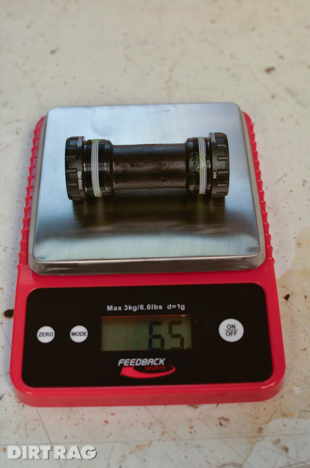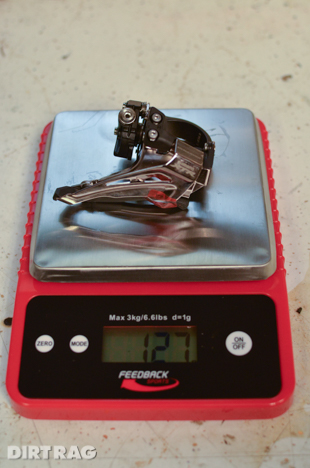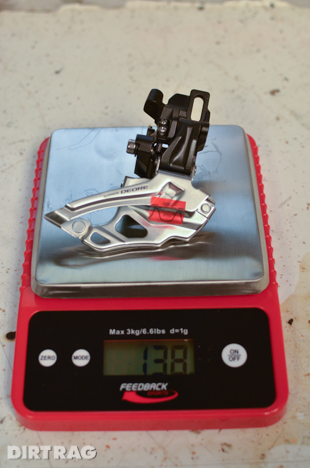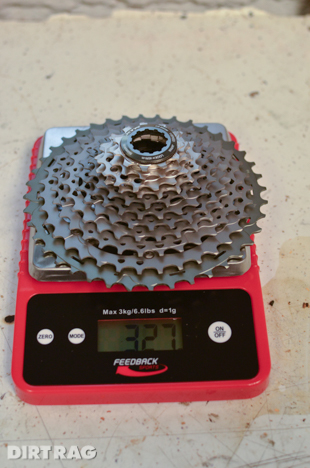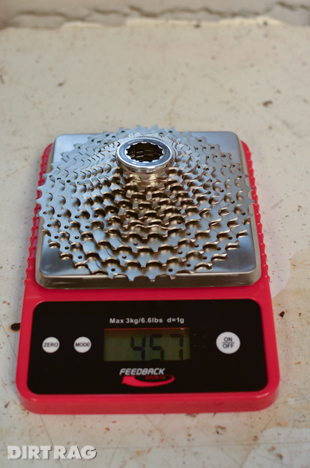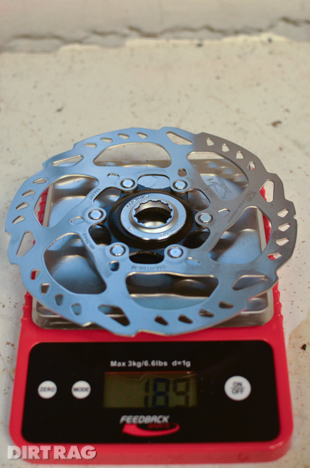In the House: Shimano’s 11-speed XTR vs. 10-speed Deore
Originally posted on December 3, 2014 at 19:26 pmAfter a first ride on the new XTR at the Orbea Oiz launch this summer, we’ve been impatiently awaiting for the XTR groups to become available. A few days ago, the wait was over.
Peel off that shiny outer layer and things look even more classy.
Just before the XTR stuff showed up, we also took delivery of the Deore M615 2×10 group, which is seems to be pretty darn awesome for an entry level mountain bike group.
Everything got unboxed and unwrapped, and each piece went up on our new Feedback Sports Summit scale. Weights, approximate retail prices, and comments below. We have an interesting plan for these groups, but that news will have to wait until a few more big cardboard boxes show up at HQ.
XTR – $600. Deore – $140. I’ll be honest here, the XTR crank doesn’t do much for me aesthetically, but it sure is shiny. The Deore crank has the best dollar to looks ratio of anything on the market right now. (In my heart of hearts, I prefer the looks and finish of the Deore crank, but we won’t talk about that)
XTR – about $40. Deore – included with crankset. The XTR BB looks mighty svelte, and comes with a plastic adaptor to install it using the regular Shimano bottom bracket tool. The bearing seem tiny, but for the most part Shimano bottom brackets are quite robust, so the odds are good the bearing should have an acceptable life span.
XTR – $240. Deore – $80. Both rear danglers have a clutch, and the 100 gram weight difference is the biggest percentage weight loss for the whole group. Neither of these are winning any awards for looks in my book, but form over function, and I’m not looking at them while riding, etc.
XTR – $120. Deore – $35. Shimano seemingly isn’t really pushing the 1x aspect of the new XTR groups for anyone but fit XC race types, steering most riders towards a double crank, so the front pusher is in full effect. A standard clamp mount Deore front derailleur will weigh more than the direct mount shown here, FYI.
XTR – $350. Deore – $45. Considering the shifting technology built into a modern cassette, the Deore cassette is a steal, albeit with one fewer cog. The XTR cassette slots in between the SRAM XO1 and X1 ten speed cassettes in terms of price, but is still a ton of money to spend on a wear item.
XTR – about $300 per wheel (no rotor). Deore – about $140 per wheel (no rotor). XTR Trail brakes may be the best brake on the market, assuming money is no object. The much less expensive Deore brakes use the same Servo-Wave link that everyone loves. Swap in some fancy IceTech finned pads and these may be the best bang for the buck going right now.
Front 180mm rotors. XTR on the left, Deore* on the right.
Rear 160mm rotors.
XTR – $75 per wheel. Deore* – $35 per wheel.
The rotors sent in for test with the Deore group are actually the RT68 model, which is part of the Zee group. They feature the ICE technology: a steel/aluminum/steel sandwich construction for better cooling. The standard RT64 Deore rotors do not have this feature.
XTR – $60. Deore – $25. The XTR chain uses hollow pins which explains most of the weight savings.
XTR – $240. Deore $80. I really can’t think of much to say here. They are shifters, and are mostly hidden by the handlebar.
First impressions
XTR: The fit and finish of XTR is still tops in the industry. No one will mistake this for an entry level group. As a flagship product, XTR continues to look the part. You’re looking at about $2,400 for the complete set, depending on your specific setup.
Deore: It is hard to believe how good this stuff looks. Except for the rotors and cassette, the rest of the group would not look out of place with XT or SLX markings. You’re looking at about $755-$800 for the full set. For something marketed as entry level, this a very, very impressive looking group of components.
Next step
We’re going to build both groups onto a pair of identical bikes and see where they take us. Stay tuned.




